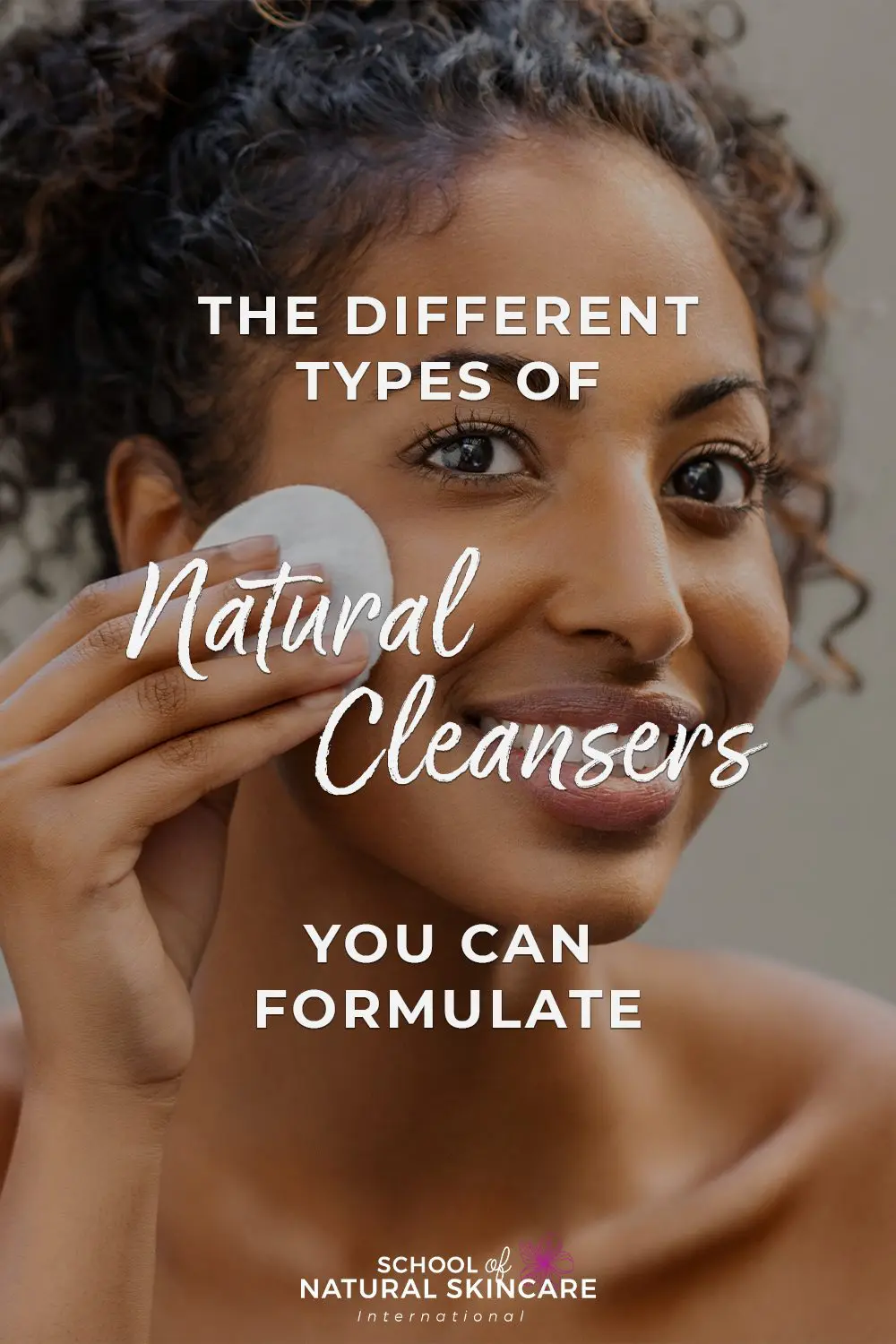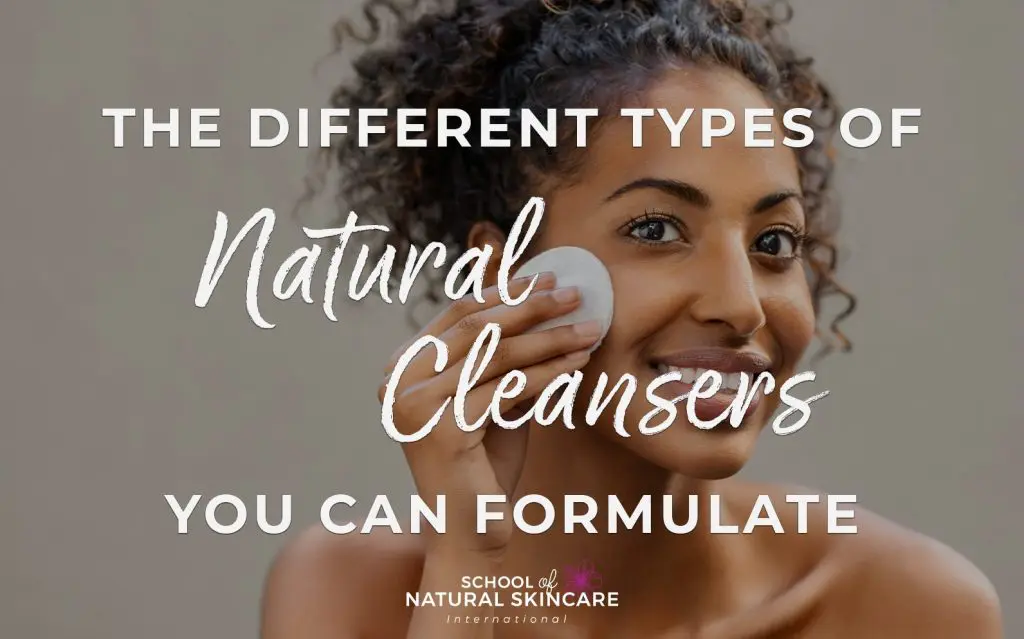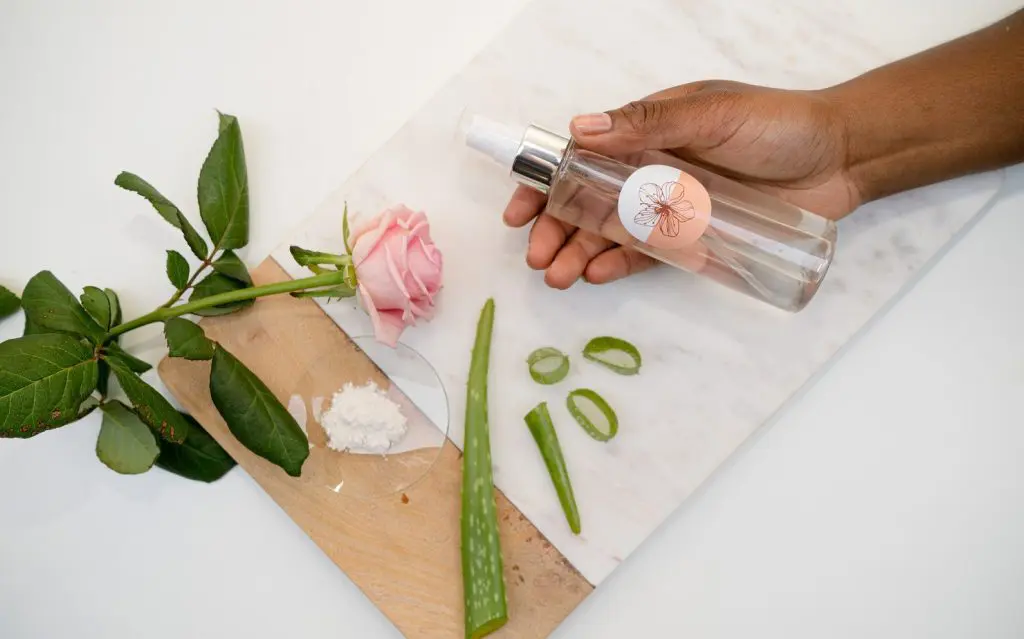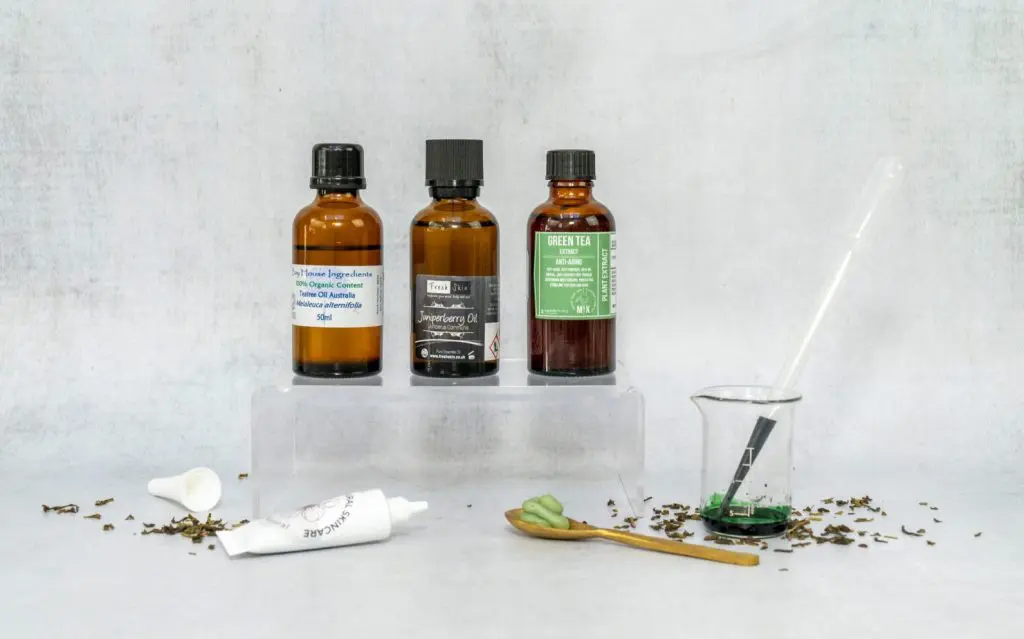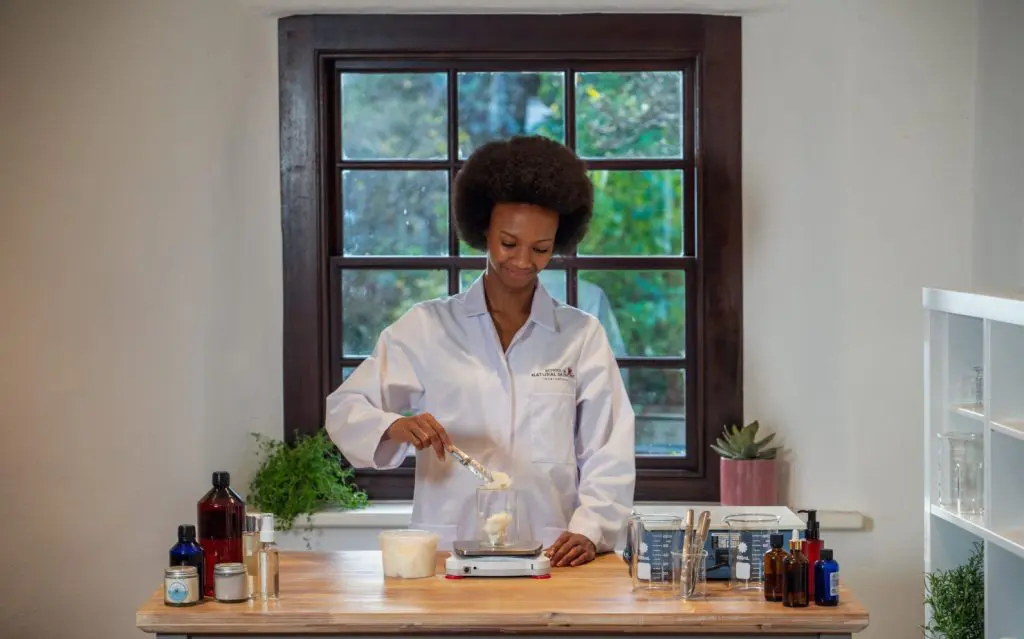These days many people want to avoid surfactant-based cleansers like face wash and foaming facial cleansers as they can be too harsh for the skin and strip it of its natural oils.
In her book ‘Skincare: The No Nonsense Guide’, skincare guru Caroline Hirons is adamant about not including “anything foaming” in your facial cleansing routine. She adds,
These products are too drying. Full stop.
Luckily there are a wide range of beautiful, gentle natural cleansers you can formulate that are very effective without stripping your skin, for example:
- Cleansing oils and oil-to-milk cleansers.
- Gel-to-milk cleansers (cleansing gels).
- Cleansing balms.
- Cleansing lotions or milks.
In our Diploma in Natural Skincare Formulation you’ll learn how to formulate each of these types of cleanser. We provide detailed information about the special ingredients you’ll need, professional product formulations, natural skincare formulation templates and demonstration videos, so you can see exactly how to create them!
Why do we need natural cleansers for our skin?
Cleansers are the cornerstone of a good skincare regime! Cleansers are used in the evening before going to bed to remove dirt and grime accumulated throughout the day, and any make-up or SPF.
Cleansing in the morning is also advised as during the night the skin undergoes a restoration process that results in dead skin cells and excess sebum, which need to be removed.
Let’s look at each type of cleanser in turn!
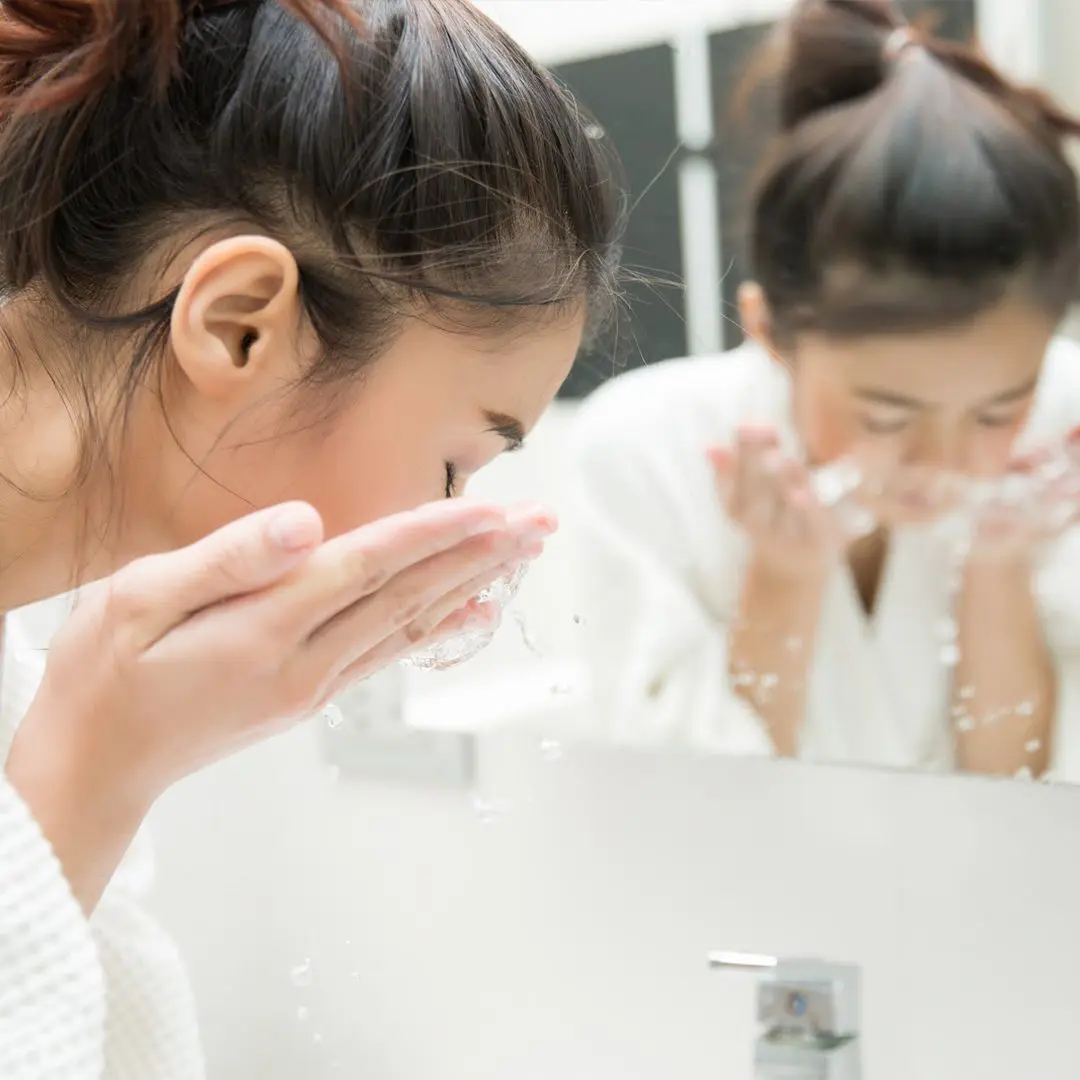

Four different types of (non-foaming) cleansers in natural skincare
Here is a summary of non-foaming cleansers and their formula type:

Cleansing oil and oil-to-milk cleansers
As the name suggests, these are oil-based products. Natural skincare cleansing oils will contain a blend of plant oils, whilst more conventional cleansing oils are likely to contain mineral oil. This product type is applied to dry skin and then rinsed off with water (sometimes with the help of a washcloth).
Some cleansing oils contain special emulsifiers that are self-emulsifying.
These emulsifiers create oil-to-milk formulas that become milky emulsions when they come into contact with water during the rinsing off stage.
How they work:
When cleansing oil is massaged into the skin, the oils in the formula naturally spread and dissolve pre-existing oil/dirt on the skin, such as sebum and make-up.
In oil-to-milk formulas the oils emulsify on contact with water, turning the product milky, allowing both oil and water soluble impurities to be removed and helping the product rinse off easily.
Skin is left soft and nurtured; not dry or greasy.
Benefits:
- Cleansing oils effectively remove impurities whilst maintaining the skin’s natural moisture balance.
- These types of natural skincare products tend to incorporate highly moisturizing oils such as jojoba oil, which condition the skin, leaving it feeling smooth and soft once removed.
- Formulas are likely to contain a percentage of essentials oils that will have their own specific benefits.
- A small amount of the product will go a long way.
- The oil texture of the formula allows the product to spread onto the skin and instantly blend with make-up and impurities and lift them, without rubbing.
- Anhydrous formulas don’t require a preservative.
Cleansing oils can be formulated for any skin type.
They are particularly suited for dry and sensitive skin types.
Cleansing oils can help dry skin maintain its natural moisturizing factor and pH level. They are suited to sensitive skin as very little rubbing is required to remove the oil, dirt and make-up. They also have mild properties so they should not cause irritation. If you want to find out more about pH testing, read our article here.
Gel-to-milk cleansers (cleansing gels)
There are some very exciting and innovative self-emulsifying emulsifiers available today in natural skincare which create gel-to-milk cleansers. These work in a very similar way to oil-to-milk cleansers and have the same benefits but they are thicker in consistency. When they are dispensed they are gel, but when you add water they turn milky.
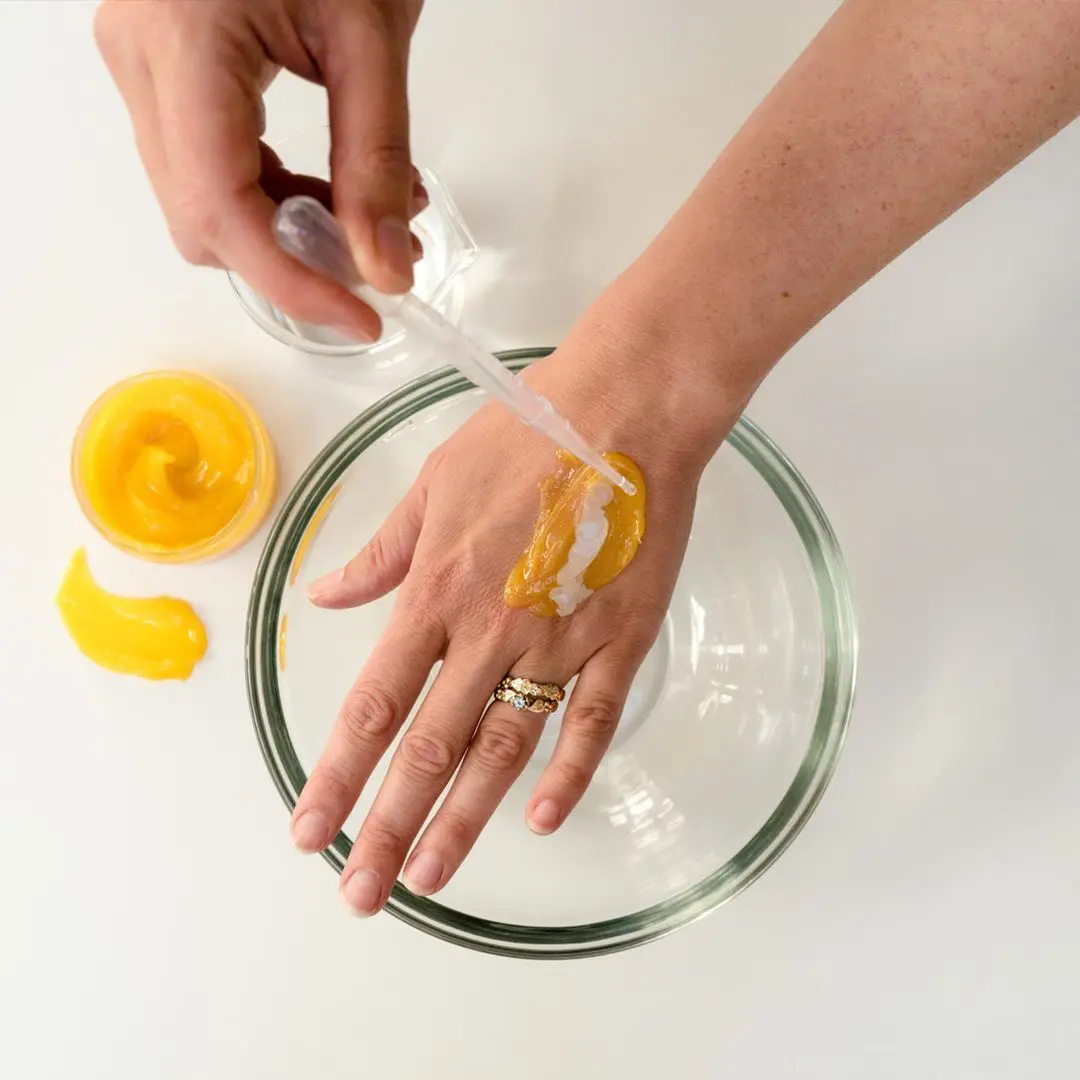
These are such fun natural skincare products to formulate because you can also add exfoliants to them to transform them into facial scrubs.
We have been experimenting with these a lot in preparation for the release of the Third Edition of our Diploma in Natural Skincare Formulation!
Here is one of the cleansing gel formulas that we share with you in the course…
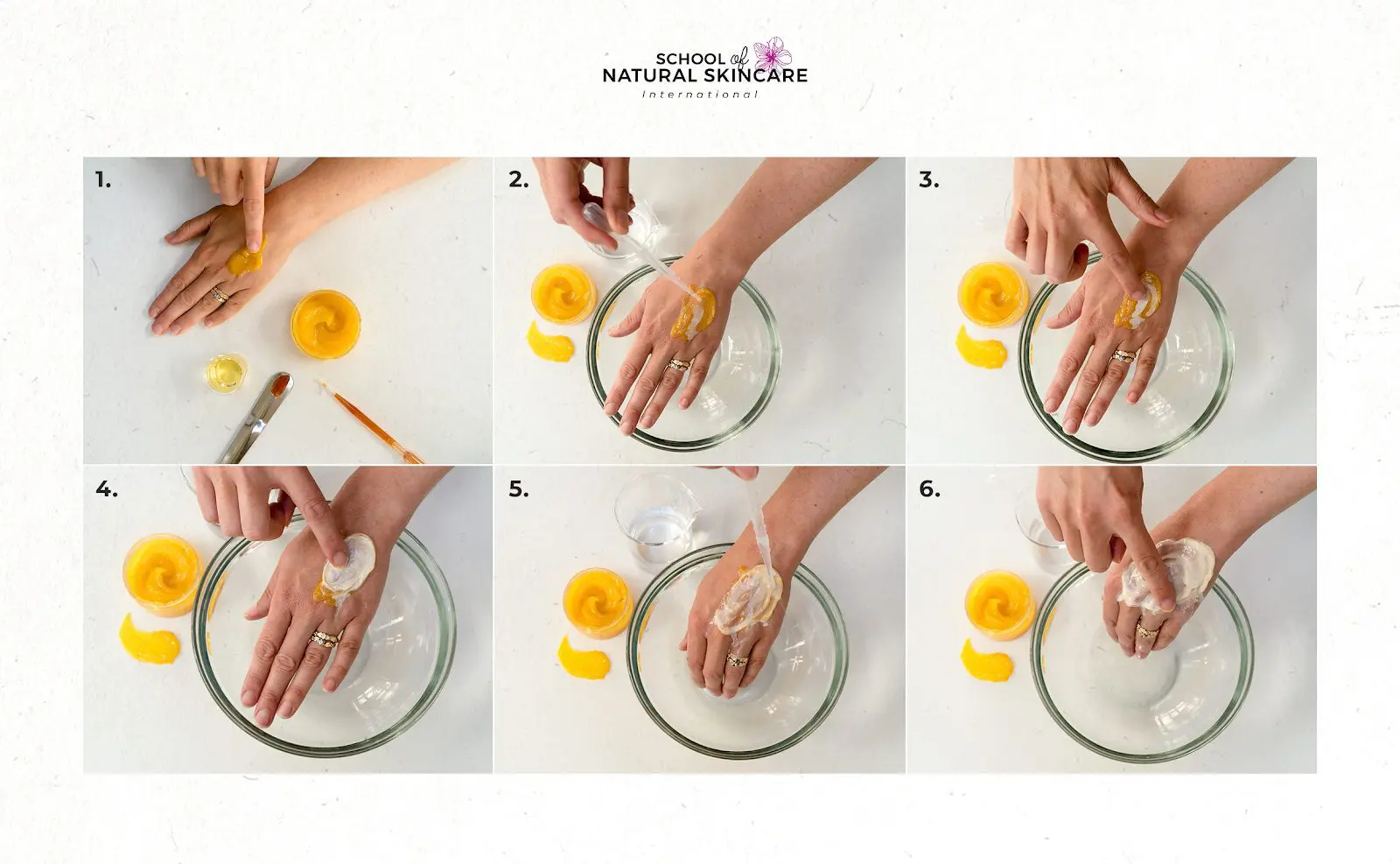
Cleansing balms
Cleansing balms are also similar to cleansing oils, but have a semi-solid consistency. They are usually a blend of oils, butters and wax and can include an emulsifier.
Cleansing balms have become incredibly popular types of cleansers in recent years.
Using a special emulsifier that is self-emulsifying in your natural skincare formula means that the balm rinses off more easily.
Cleansing lotion/milk
These are emulsion-based cleansers that contain both oil and water, held together with an emulsifier. The viscosity can vary so you can create light, fluid cleansing milks or a thicker, lotion consistency.
How they work:
Cleansing lotion/milk contains ingredients such as lightweight oils and emollients, which are known as lipid molecules. At a molecular level, these ingredients contain components that are hydrophobic, also known as lipophilic.
This structure means the molecule repels water and attracts oil and dirt.
Once the cleansing lotion/milk has been applied to the skin, the hydrophobic component attaches to the oil and dirt, loosening the forces holding them onto the skin, and in turn allowing the water to remove them more easily.
Benefits:
- Cleansing milks are moisturizing and non-drying due to the oil they contain.
- Cleansing milks clean the skin without stripping it of its natural oils and disrupting the skin’s natural pH.
- This type of product maintains the skin’s natural moisturizing factors, which keep the skin hydrated, healthy and balanced.
- When used with a cloth, a very thorough cleanse is achieved.
Cleaning lotions can be formulated for any skin type. Due to the gentle nature of cleansing milks, they are ideal for normal to combination skin types or dry skin types.
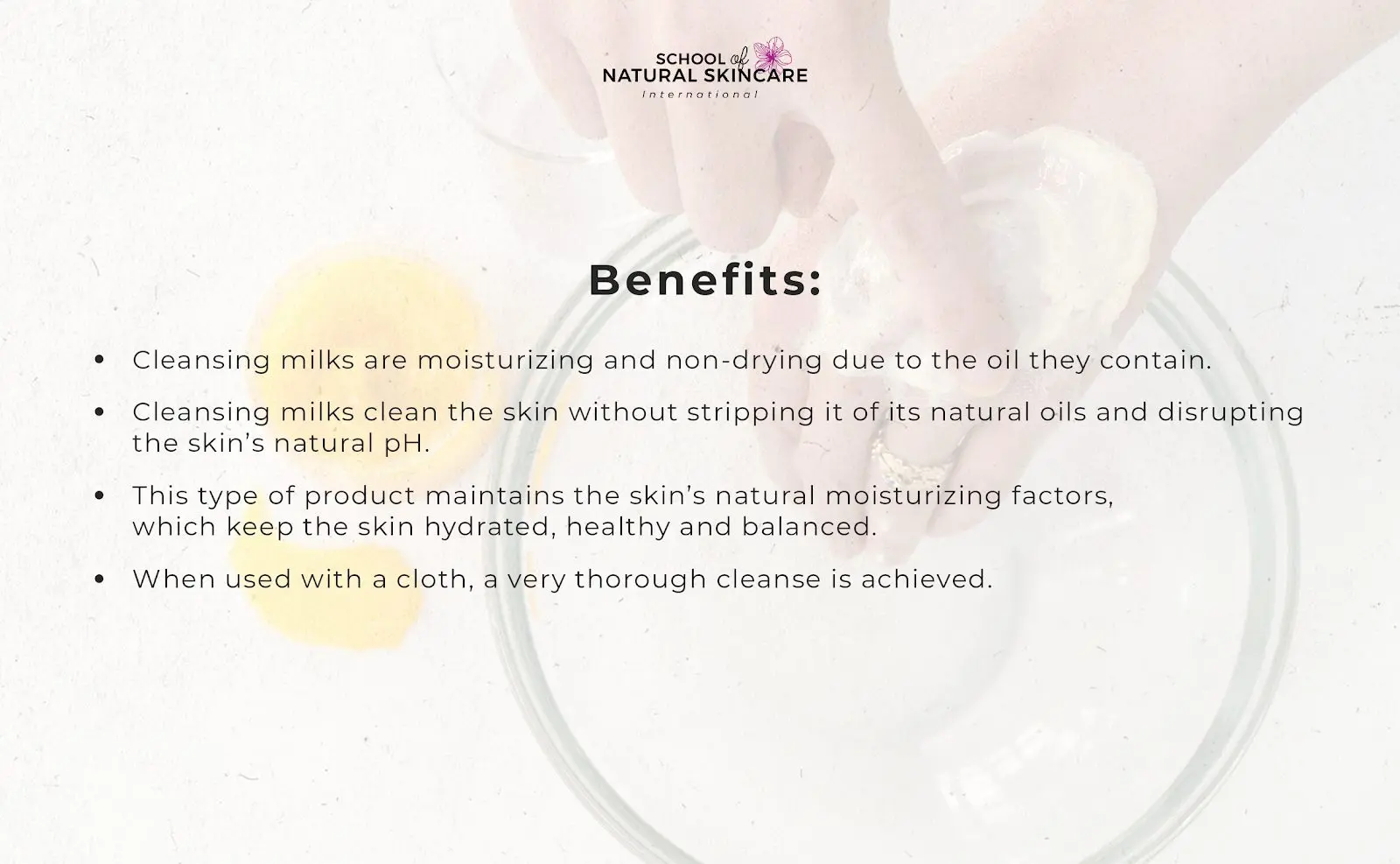
The star ingredient: Self-emulsifying emulsifiers
The star ingredient in many of these formulas is a self-emulsifying emulsifier.
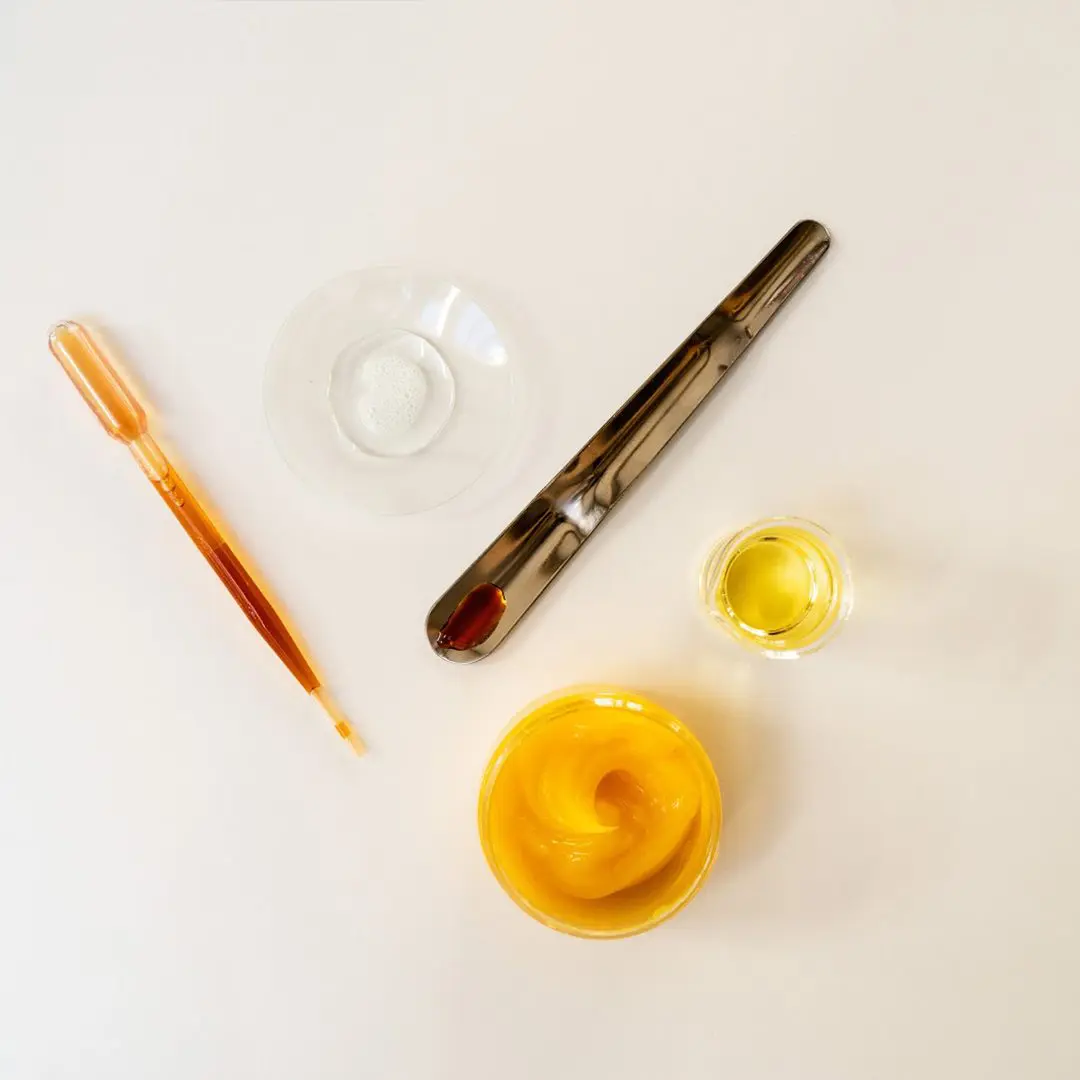
These are new and innovative ingredients that are revolutionizing natural cosmetics!
A regular emulsifier only makes an emulsion, eg a cream or lotion. Self-emulsifying emulsifiers make a special kind of oil-based product (not an emulsion). They create an interesting and unusual sensory experience for the user as they look and feel like an oil or a gel when they are applied to the skin. But when water is applied (to rinse the product off), the product becomes an emulsion on the skin, it turns milky, and the product and the dirt/makeup it removes rinses away much more easily than a regular oil or cleansing balm does.
Self-emulsifying emulsifiers leave the skin feeling soft and nourished (but not oily). A variety of self-emulsifying emulsifiers are available.
Our team of professional formulators have carried out extensive testing on many of these ingredients to find the perfect ratio to use in your formulations. We share all of this with you in our Diploma in Natural Skincare Formulation, plus our tutors are on hand to help you troubleshoot any issues that may arise.
Enrolling with the School by joining the Diploma in Natural Skincare Formulation is the fast track to creating your own professional quality natural skincare formulations, either for yourself or to sell. The course teaches you everything you need to know to make your own unique formulations as well as safe, stable and effective natural skincare products.
During your studies you’ll also learn the fundamentals of skin biology, international cosmetic regulations, the science of natural emulsification and natural preservation, as well as what’s required to set up and launch a successful brand with a unique product range.
The course is fully online meaning you can study in your own time, at your own pace, from wherever you are in the world. Plus, not only do you gain access to your course materials, but you also get to collaborate with your peers and the course tutors in our private online student and graduate community.
If you want to start formulating and are not quite sure you are ready for the course, check out our amazing Beginners guide to formulating natural skincare products. This will get you up and running!
Free Guide
The Beginner's Guide to Formulating Natural Skincare Products (From scratch, like a professional!)
Start creating your own natural skincare products from scratch – rather than simply following recipes!
Learn how to formulate like a pro and discover our top tips for becoming a confident skincare formulator.
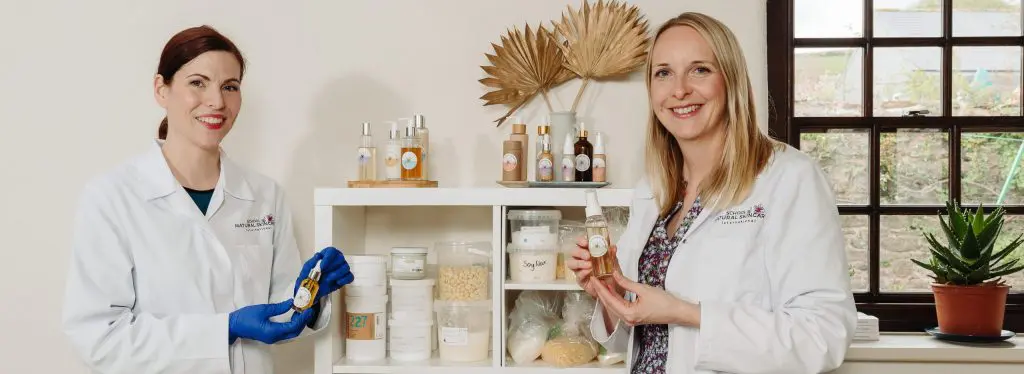
Exclusive for our newsletter subscribers. Sign up now.
We look after your data in accordance with our privacy policy.
Download this fabulous guide and you’ll learn:
- What formulating is and why you need to be doing it!
- The difference between following recipes and formulating your own products.
- Our step-by-step process to designing products people love.
- Four easy ways to personalize your skincare products.
- Choosing the right carrier oils for your beauty products.
- Plus, you’ll get our Safe Product Checklist: How to make sure the skincare products you make are safe and stable
Loved learning about these different types of cleansers? Make sure to pin this article to remember!
